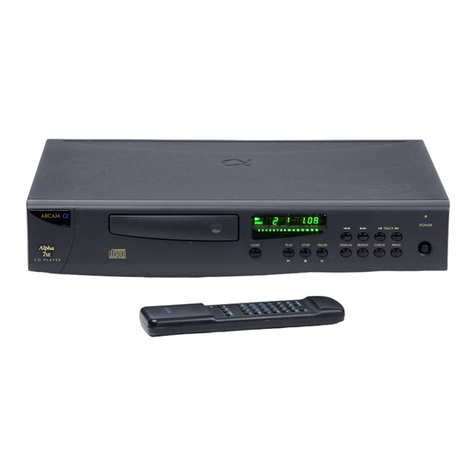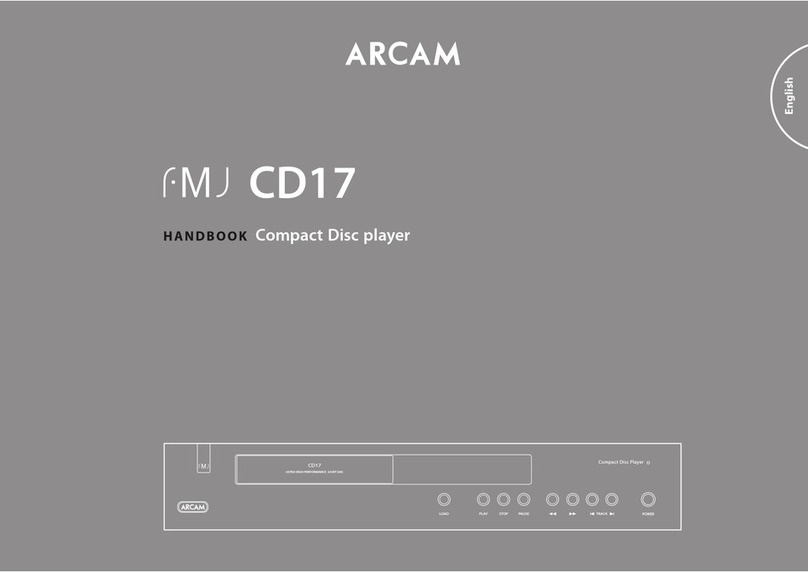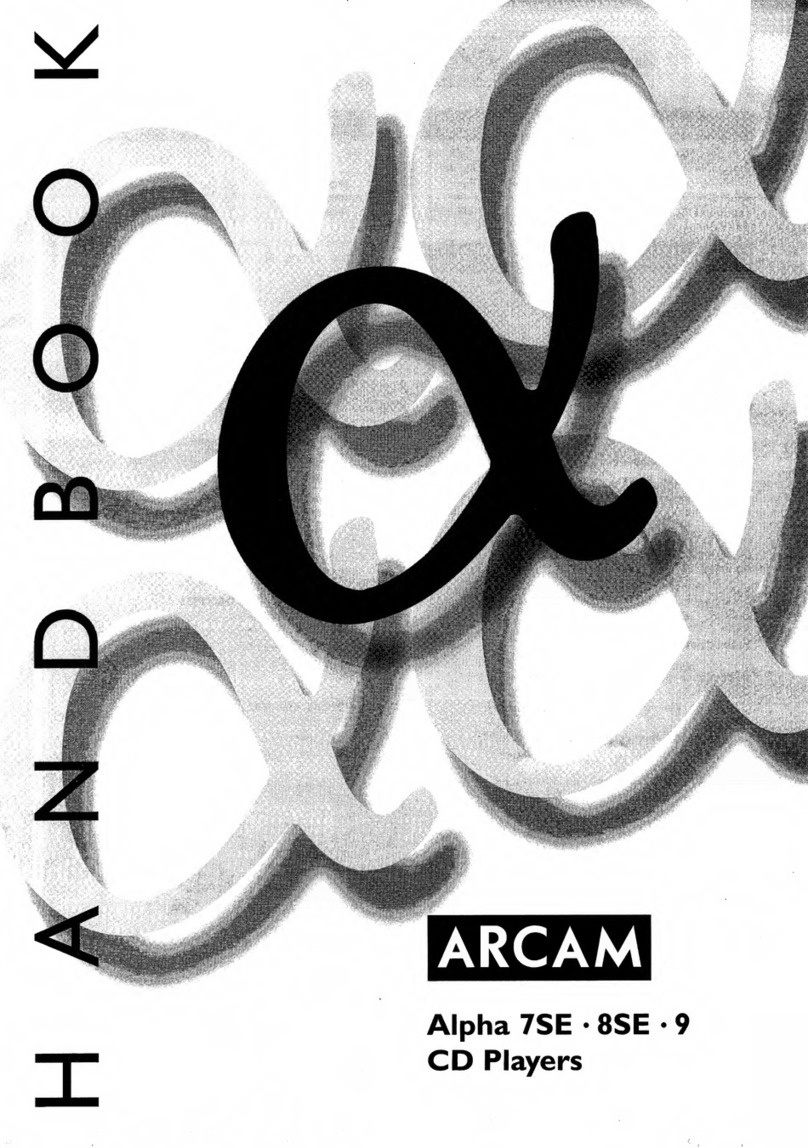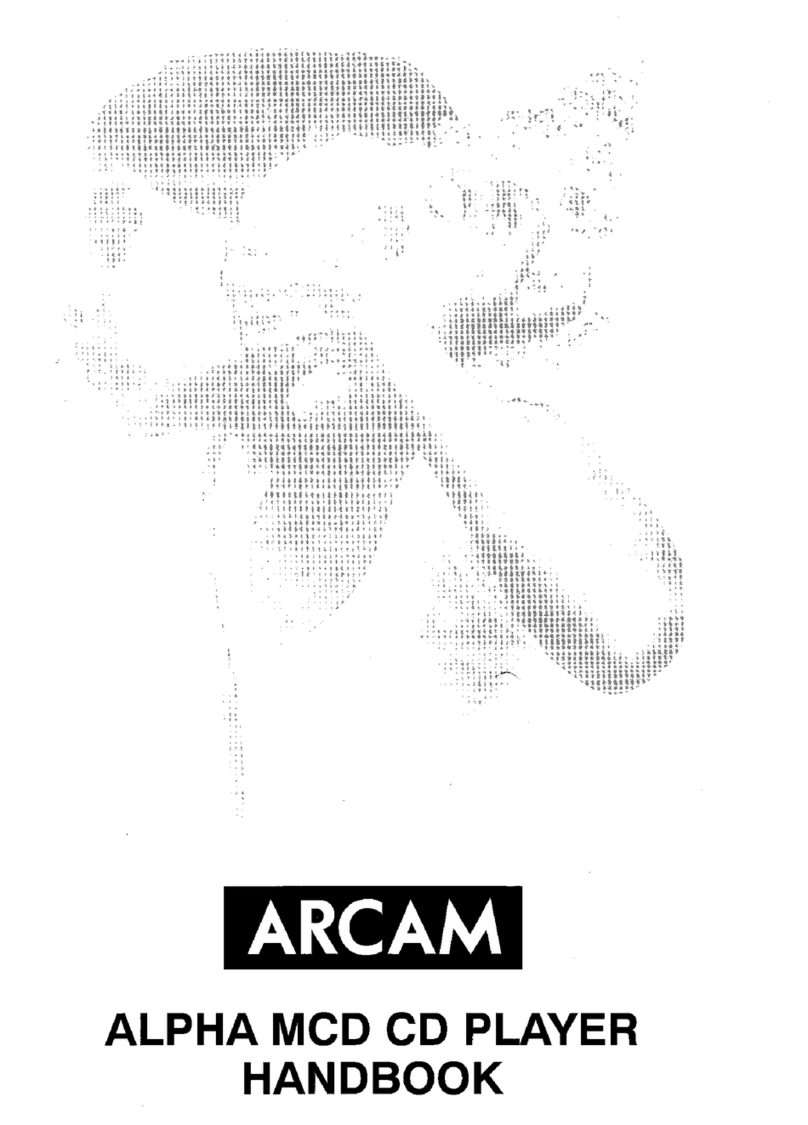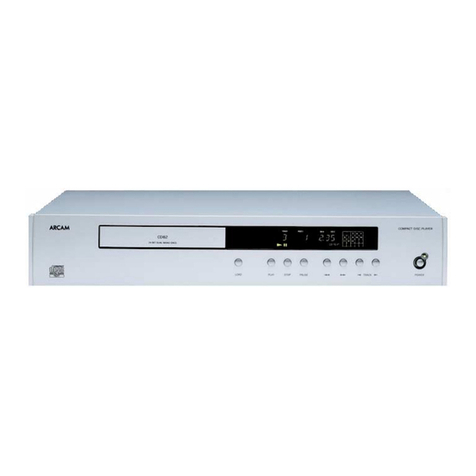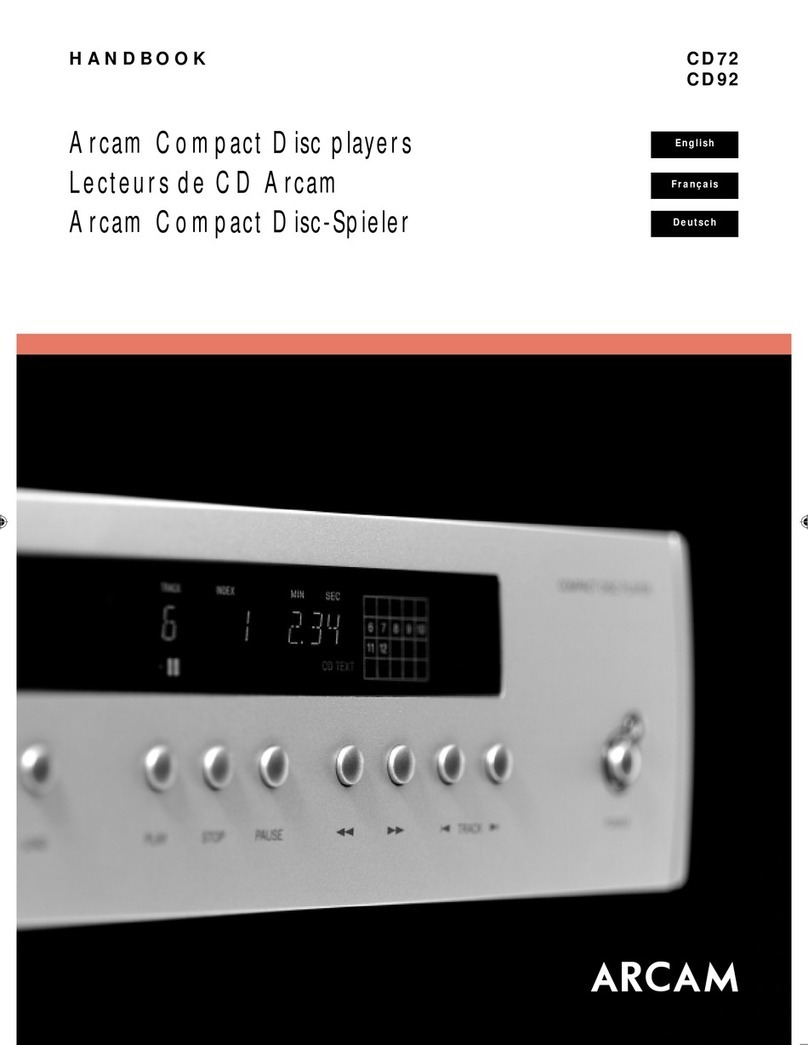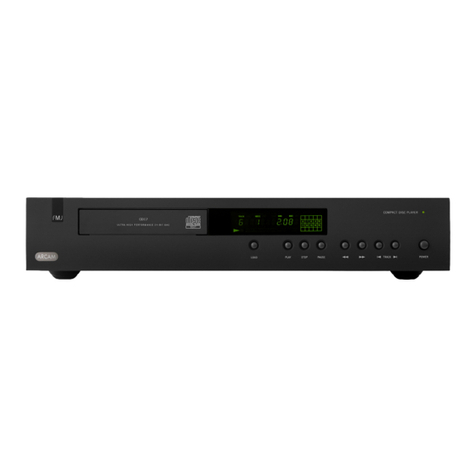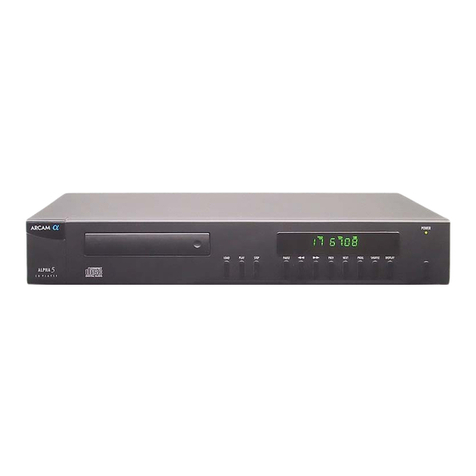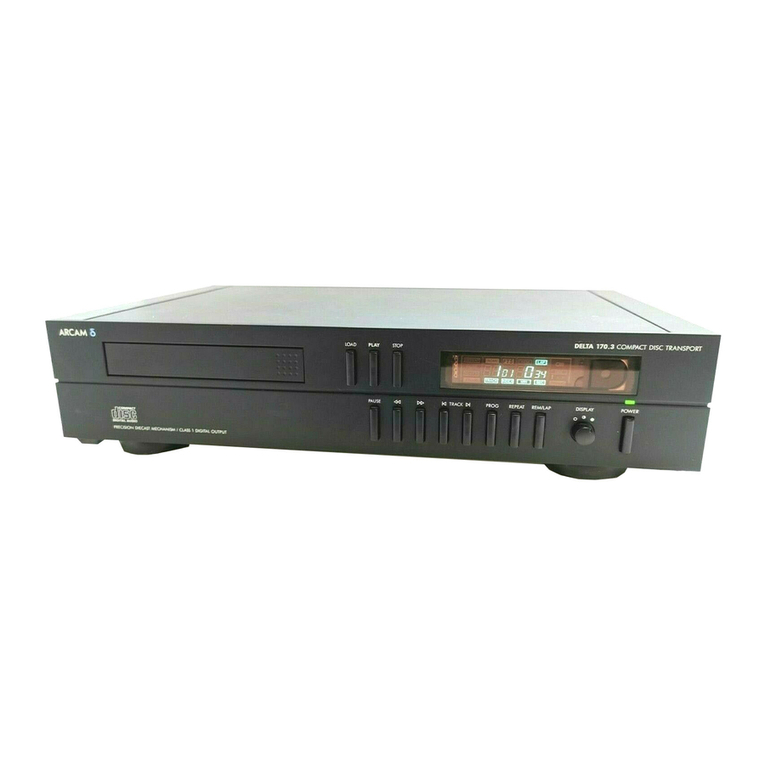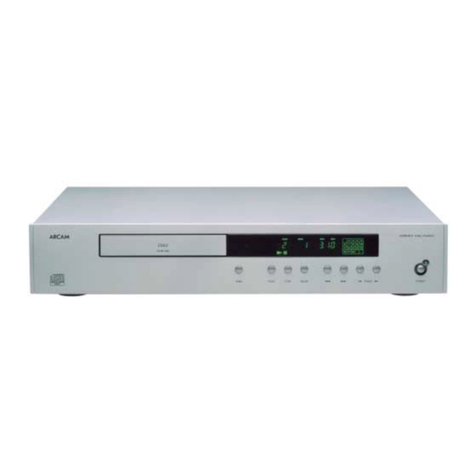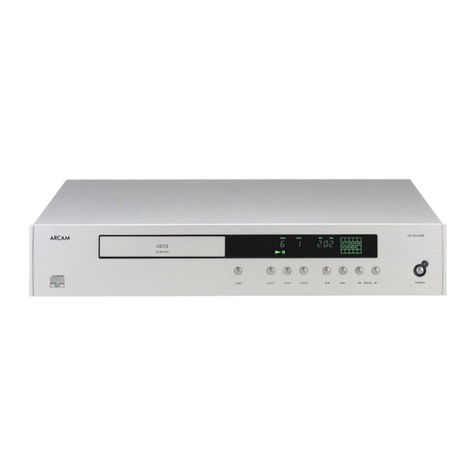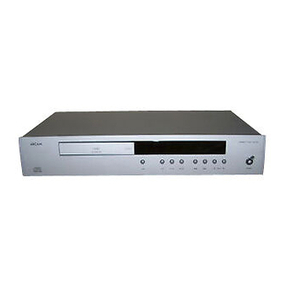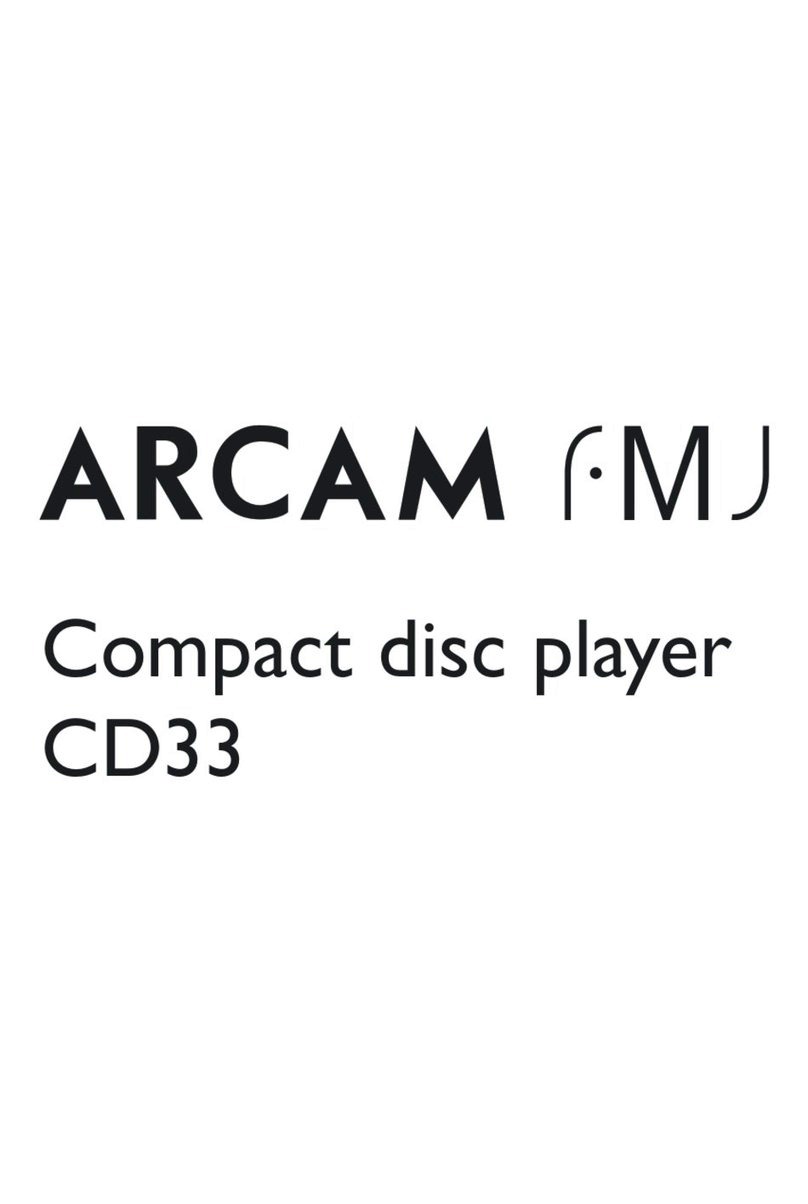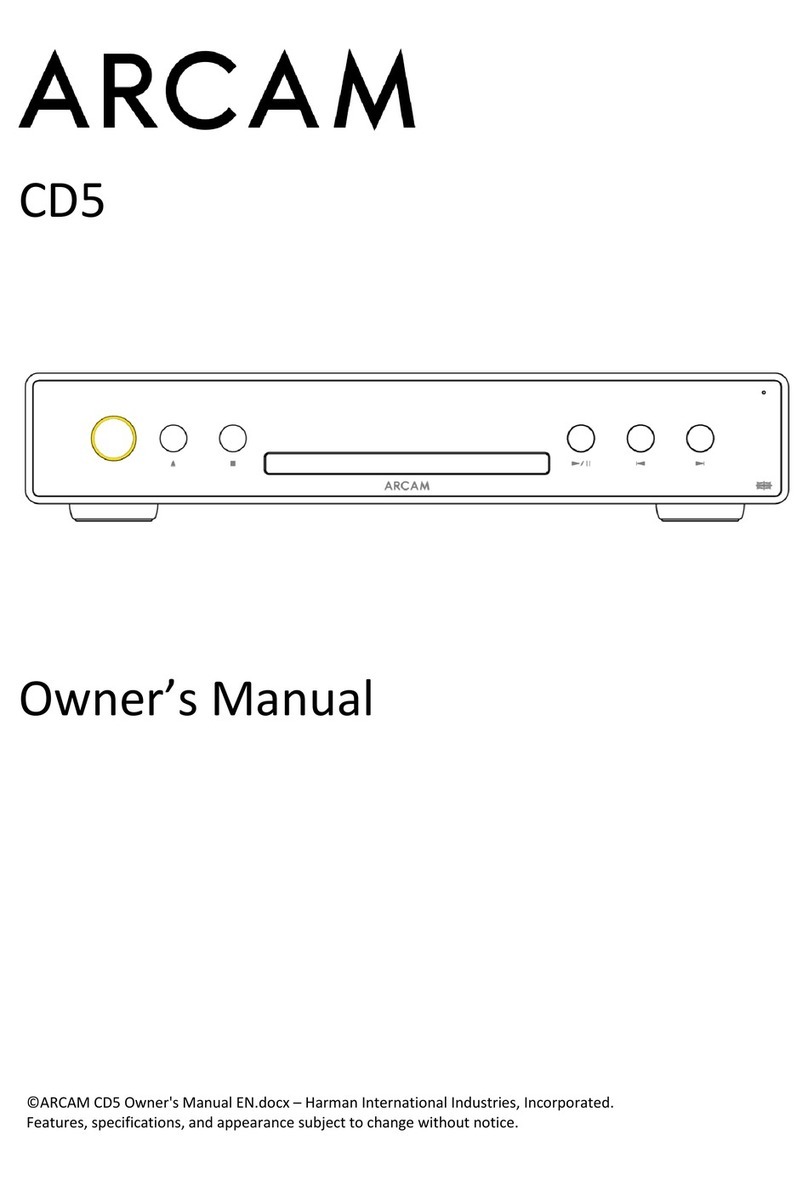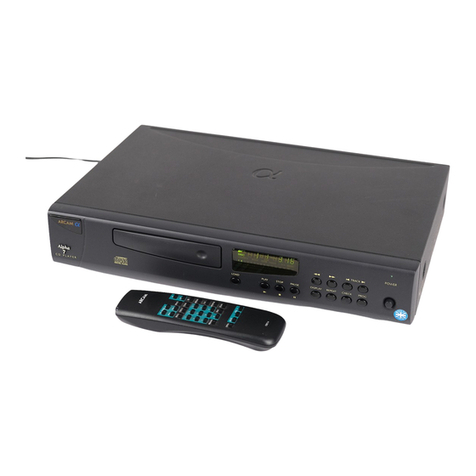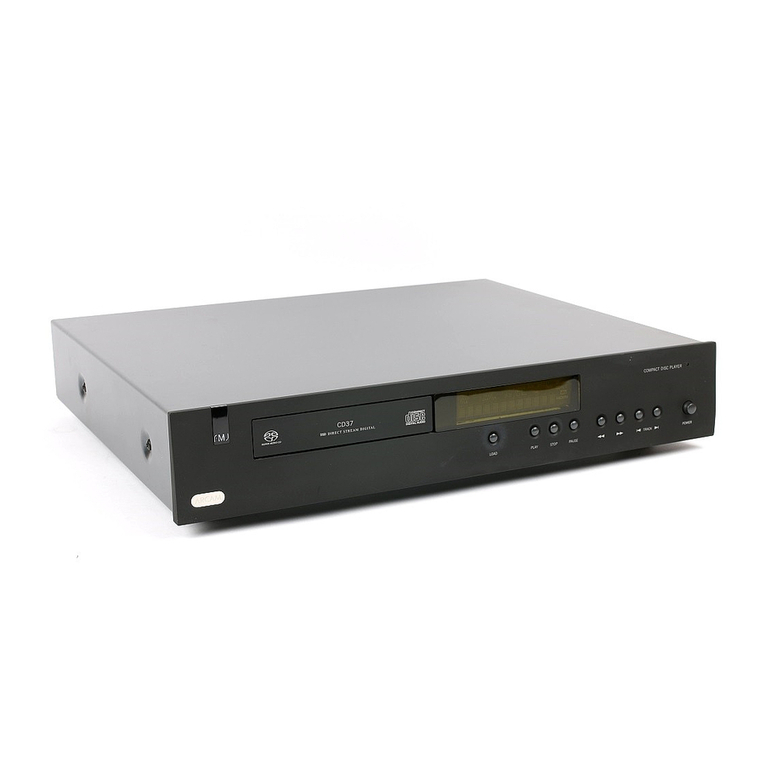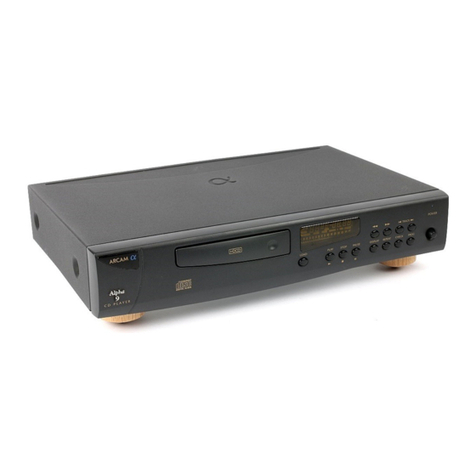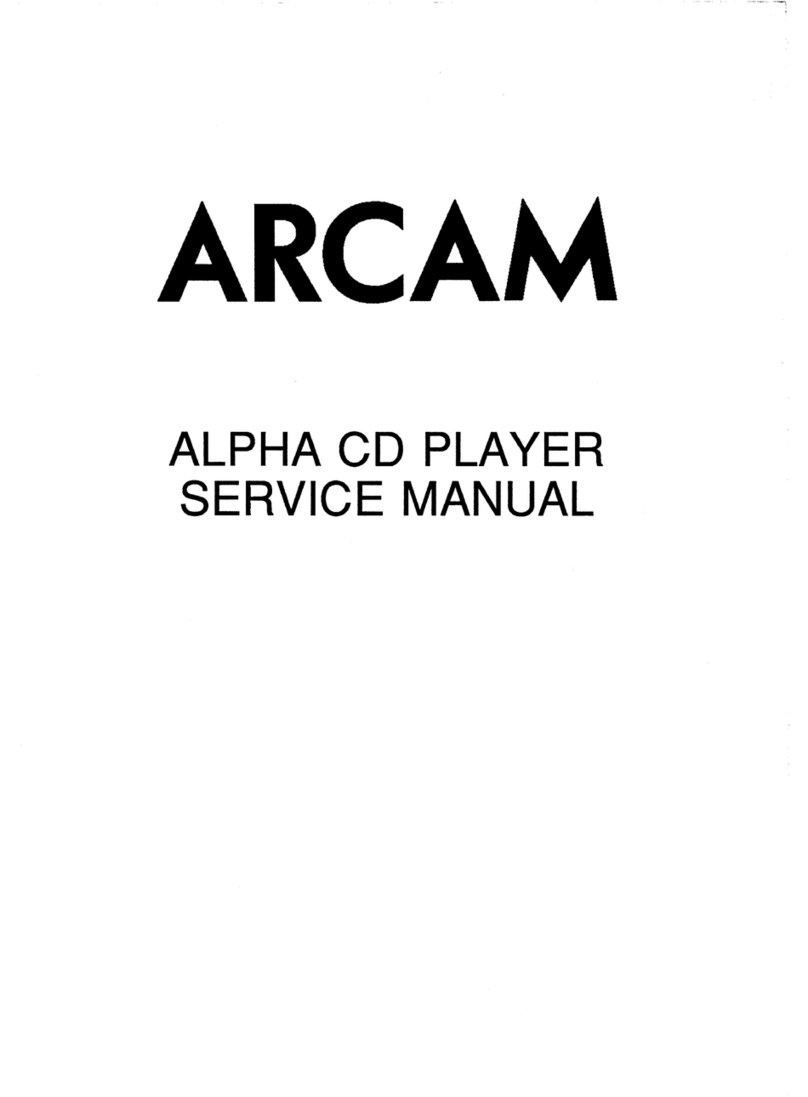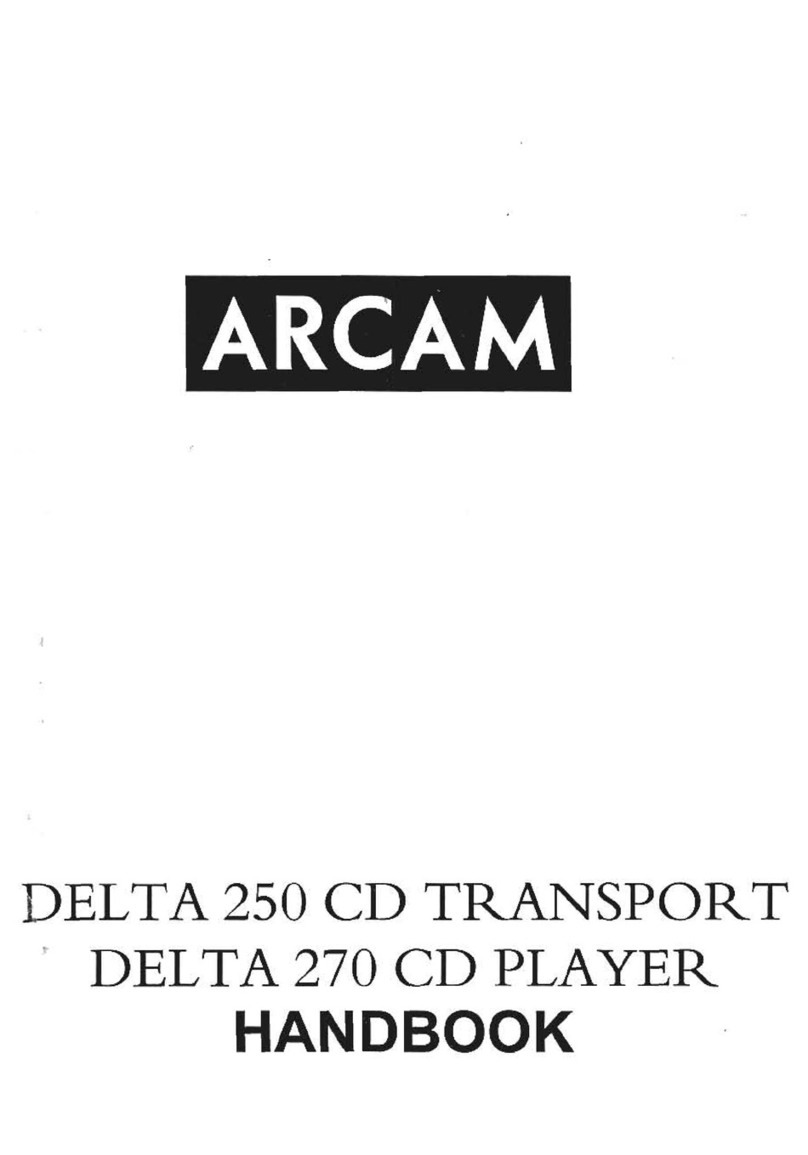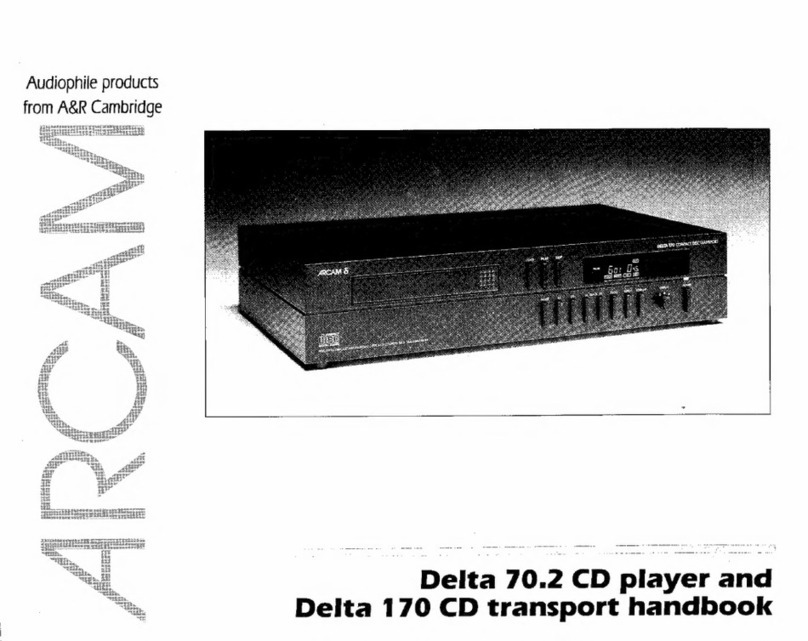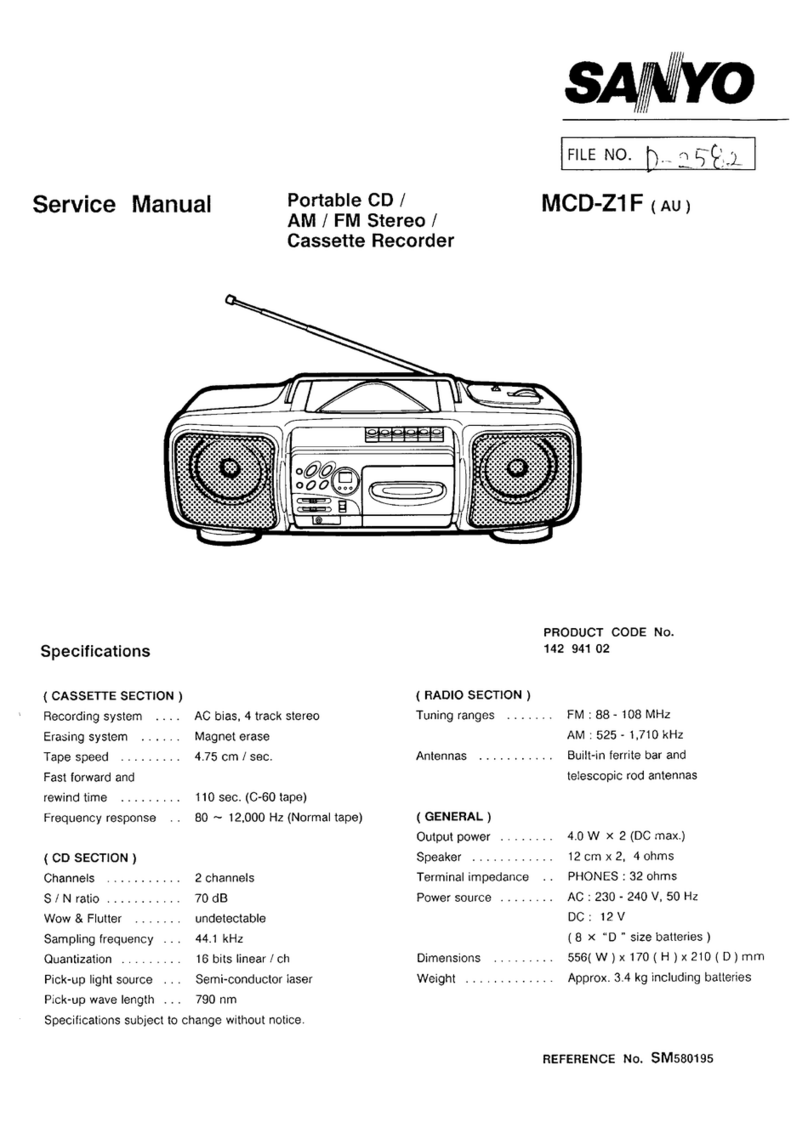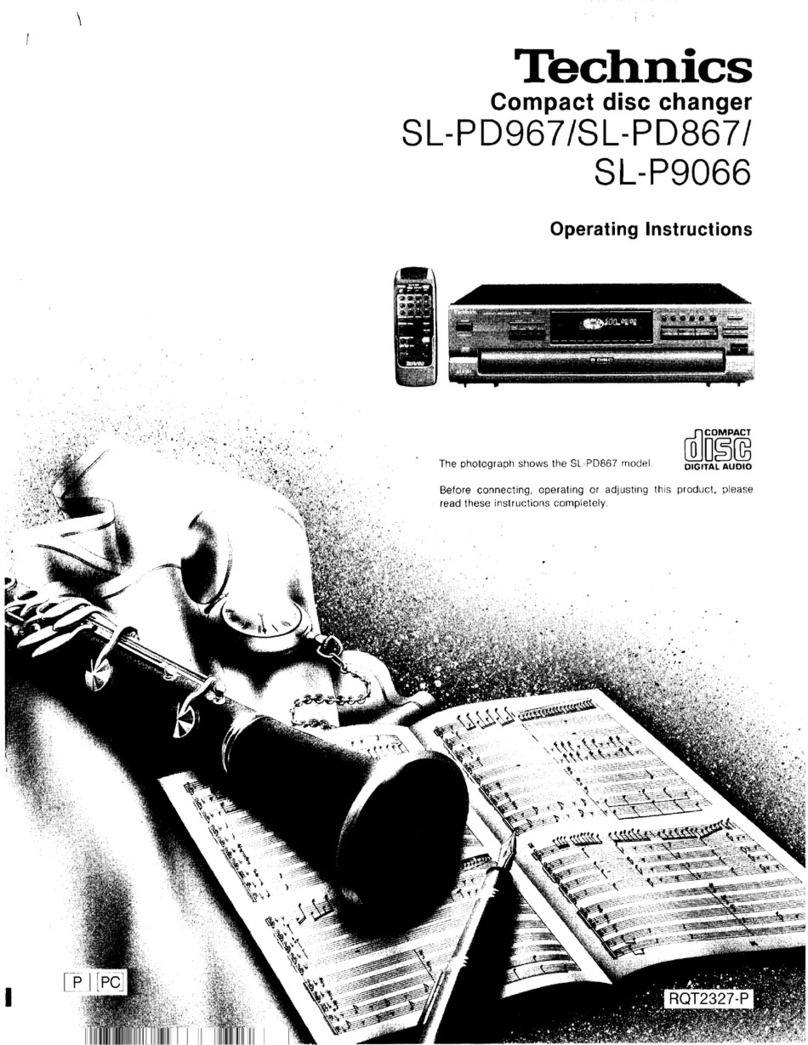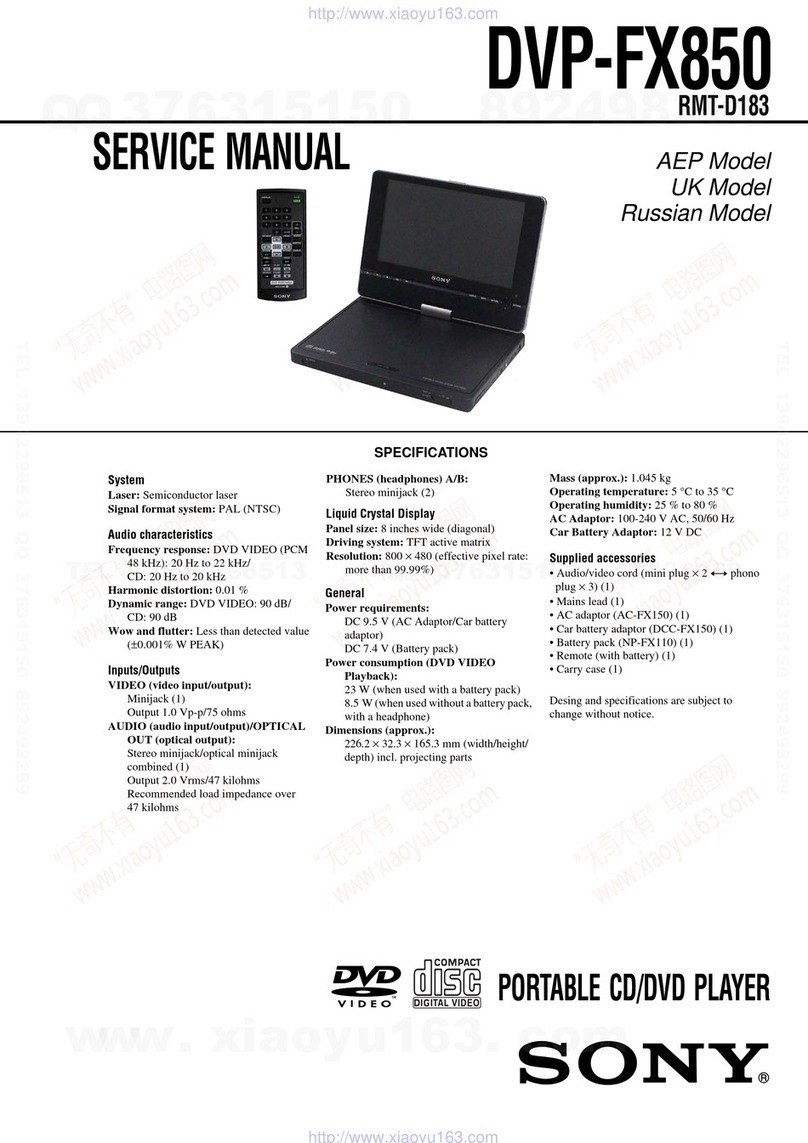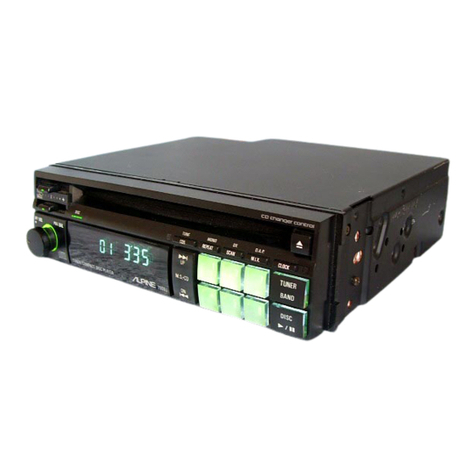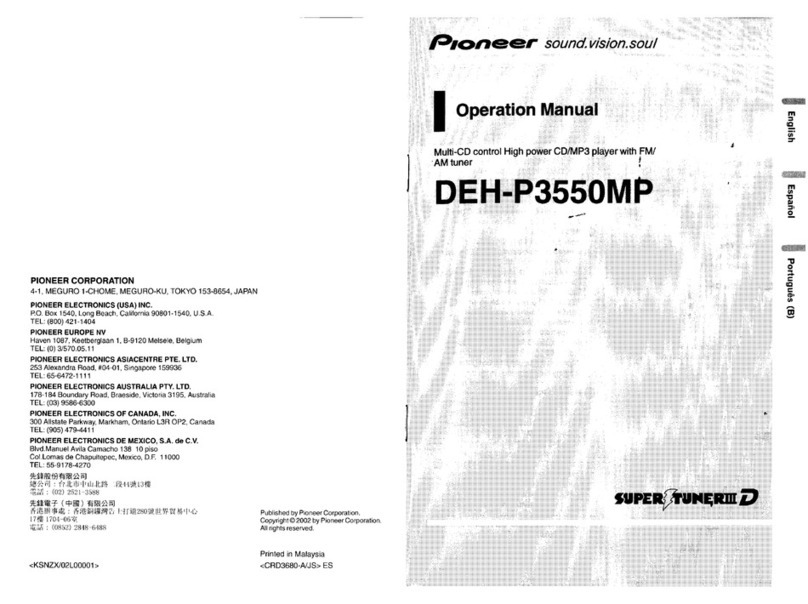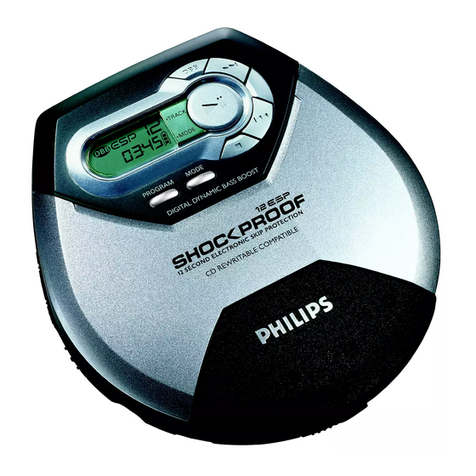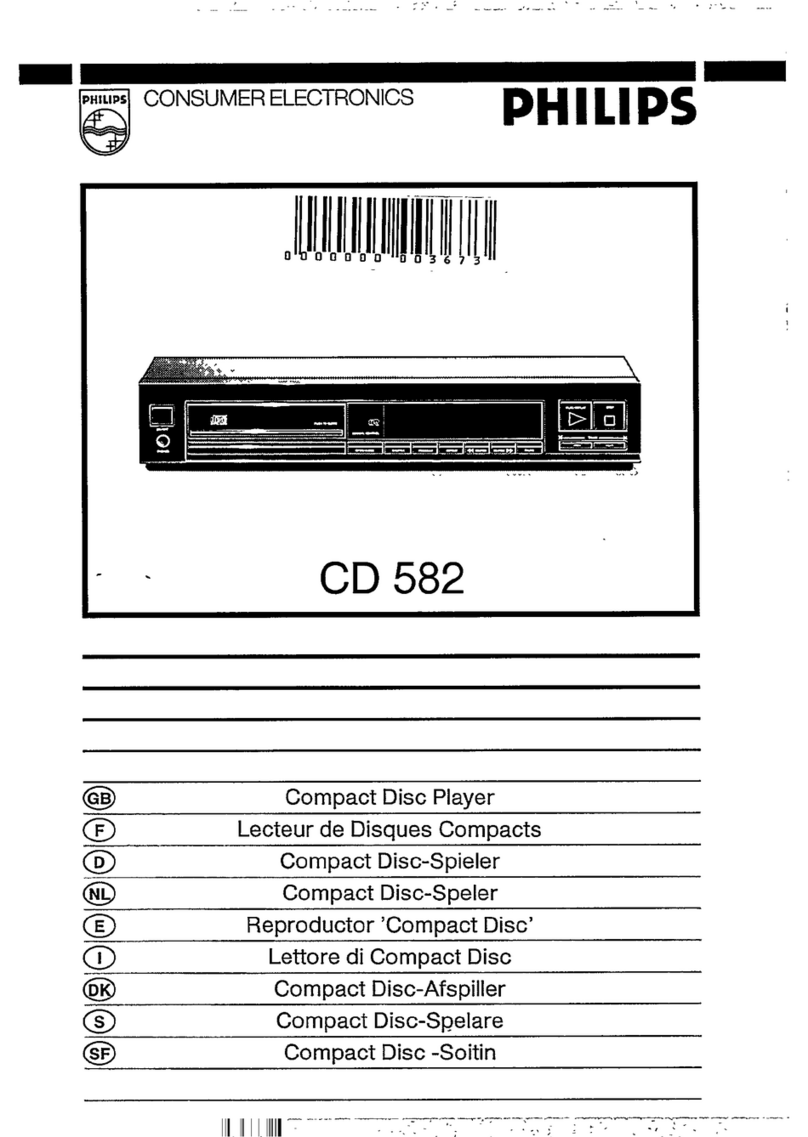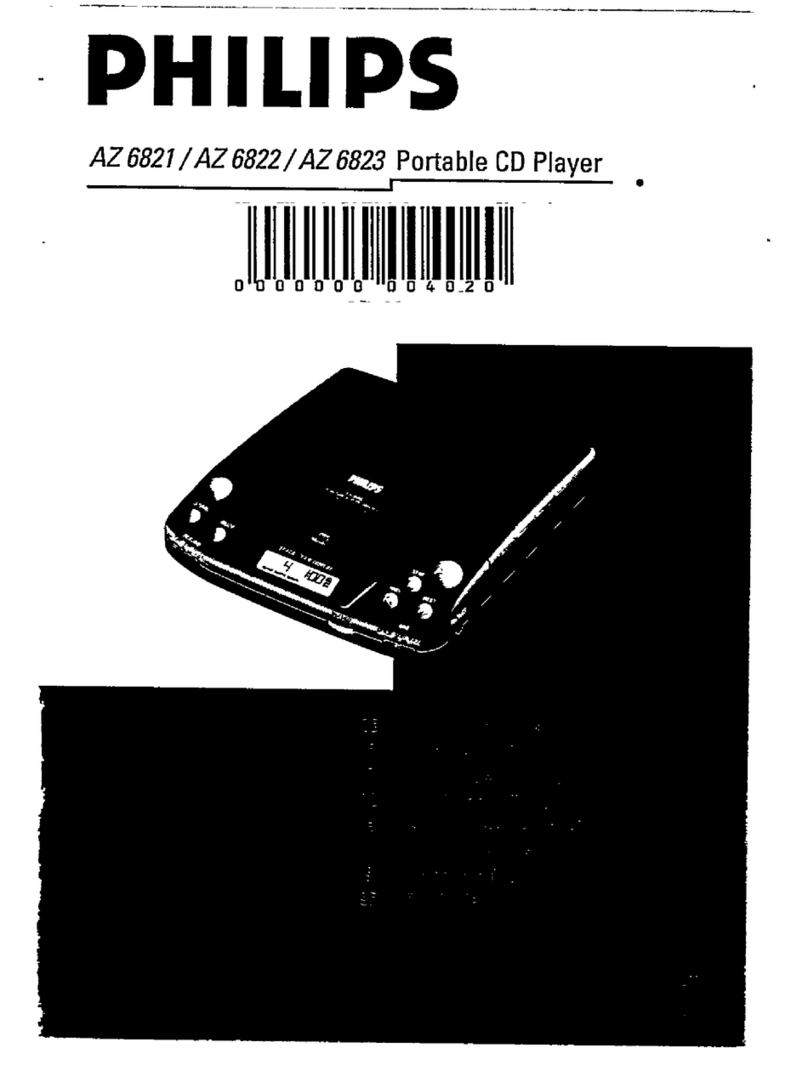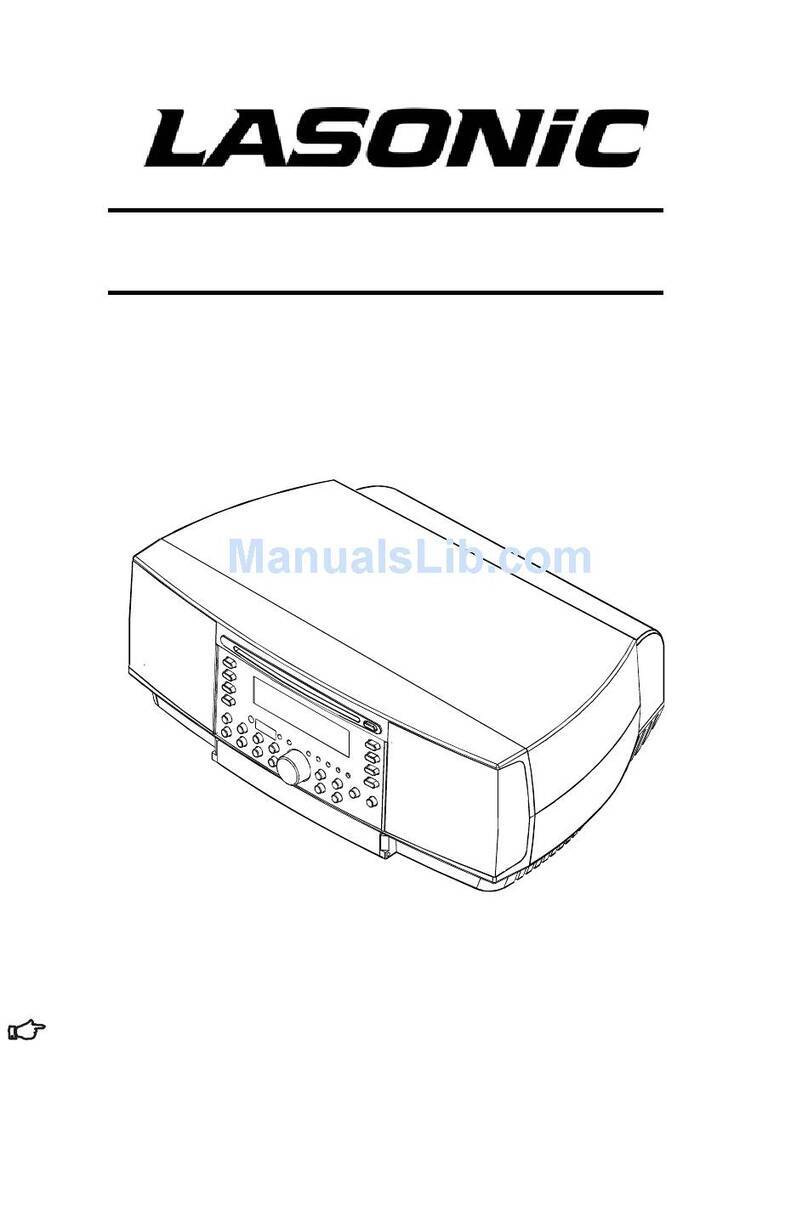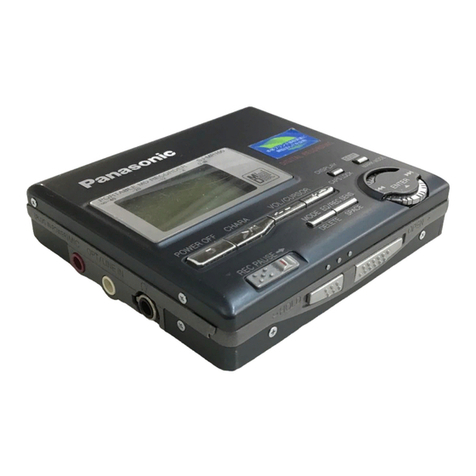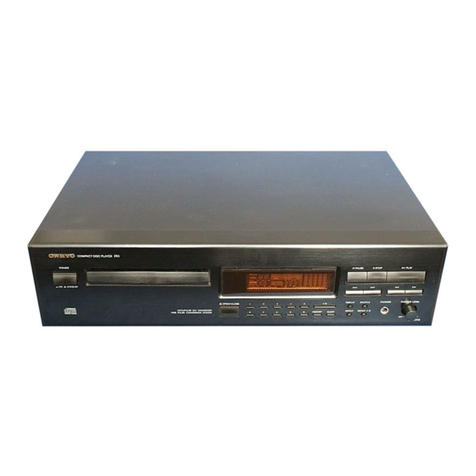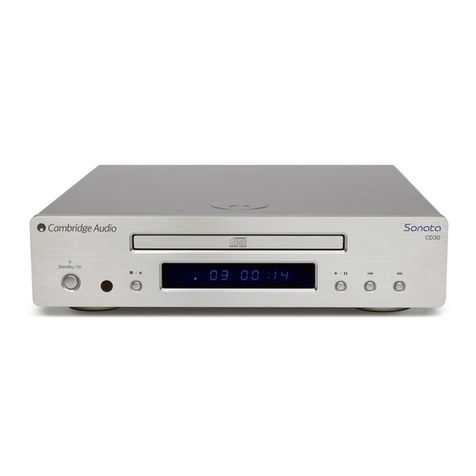Advanced operation
MODE (Display Mode)
Press MODE on the remote control to cycle through
information about a currently playing disc.
Press MODE once to display the number and elapsed
time of the currently playing track. Press again to display
the number and remaining time of the currently playing
track. Press again to turn the scrolling text display on
and press again to return to displaying track number
and elapsed time.
For CDs with text (all SA-CDs are of this type), pressing
MODE while the disc is loaded but not playing toggles
between a scrolling text display and displaying the total
number of tracks and the total playing time.
RPT (Repeat)
To repeat the entire disc or a pre-programmed selection
of tracks press RPT on the remote control.
To repeat a particular track, select that track and then
press RPT twice.
To cancel the repeat function press RPT a third time.
Shue play
Press SHUFF on the remote to play tracks in random
order. e display briey shows ‘Shuffle On’, replaced
by the letter ‘S’ on the le-hand side of the display to
show that Shue play is active.
Press SHUFF again to restore sequential playing order
(‘Shuffle Off’ is briey displayed).
Programming playback (CD Only)
is function, only available when a CD is loaded,
allows up to 100 tracks from an audio disc to be
programmed to play in any order.
ADDING TRACKS
In ‘Normal play’ mode (i.e. the display does not show
the letter ‘P’), select the track you want to add to the
program list using the Band Cnavigation keys
on the remote. When the desired track is shown, press
MENU to store the track at the end of the program list.
e display briey shows ‘Stored’.
Select further tracks followed by MENU to add each new
track to the programme list. e same track can be
added to the list more than once if desired.
PLAYING PROGRAMMED TRACKS
To play the programmed tracks, press SETUP: ‘Program
play’ is briey displayed. Press PLAY (or OK on the
remote) to start playback.
When in ‘Program play’ mode, the letter ‘P’ is displayed
on the le-hand side of the display, followed by the
number of tracks that have been programmed. When
playing a programmed sequence of tracks, the program
sequence number is displayed, not the disc track
number.
When in ‘Program play’ mode, you can review the
programme using the Band Ckeys on the
remote. e SETUP key toggles between ‘Program play’
mode and ‘Normal play’ mode, without deleting the
programme.
DELETING TRACKS FROM A PROGRAMME
In ‘Program play’ mode, tracks can be removed from
the programme when playback is stopped.
Use the Band Cnavigation keys on the remote to
select the unwanted track and press MENU to remove
the track. e display briey shows ‘Deleted’. If the last
track of the programme is deleted (i.e. the programme
list is empty) ‘All Deleted’ is briey displayed, and the
unit returns to ‘Normal play’ mode.
e whole programme can be deleted in one step by
stopping playback and then pressing STOP/<again, or
by ejecting the disc.
A note on Super Audio CD
SA-CD are discs which share the 12cm format of
audio compact discs but they encode the audio
data in a dierent way from CD or DVD-Audio
discs. A carefully mastered SA-CD recording allows
an extended dynamic range and can avoid the
amplitude compression or digital clipping that is
present in some full-scale PCM signals.
SA-CD uses Direct Stream Digital (DSD) – a 1-bit
delta-sigma modulation at the very high sampling
rate of 2.8224 MHz. is is 64 times the sampling
rate used in Compact Disc Digital Audio (CDDA),
which species 44.1 kHz at a resolution of 16-bit
in Pulse Code Modulation (PCM) format. Because
the resolution of SA-CD is 1-bit, the bitrate for each
channel is only 4 times as large.
e three types of SACDs – Hybrid, Single-layer
and Dual-layer – are all playable on Arcam’s CD37.
Of course, the CD37 also plays conventional audio
CDs (CDDA) impeccably.
For further information, see:
www.sa-cd.net – this includes an expanding list
of available material on SACD and a useful FAQ
section.
http://en.wikipedia.org/wiki/SA-CD – a useful
technical overview, including explanations of
DSD (Direct Stream Digital) and PSP (Pit Signal
Processing).
AUDIO (Repeat A-B)
is button on the remote control enables you to repeat
any section of music within a track.
While a disc is playing, press the AUDIO button at the
start of the section you wish to repeat. ‘Repeat A&’ is
shown on the display with the symbol ‘A’.
Press the button a second time when you reach the end
of the section you wish to repeat. ‘Repeat A-B’ is shown
on the display with the symbol ‘AB’.
e selected loop repeats until you press <or /or 0
to terminate. e forward search button (8) moves
forward only within the selected loop. Pressing AUDIO
again cancels the Repeat A-B function and ‘Repeat Off’
is displayed in conrmation.
SUBT (Changing layers in an SA-CD)
Hybrid SA-CDs contain a conventional ‘CD layer’ and
a 4.7GB SA-CD layer – the ‘HD layer’. e much less
common Dual-layer SA-CDs contain two ‘HD layers’
but are not compatible with legacy CD players.
To switch layers, press SUBT on the remote. ‘Layer
Change’ is briey displayed and the disc is reloaded in
the new mode.
